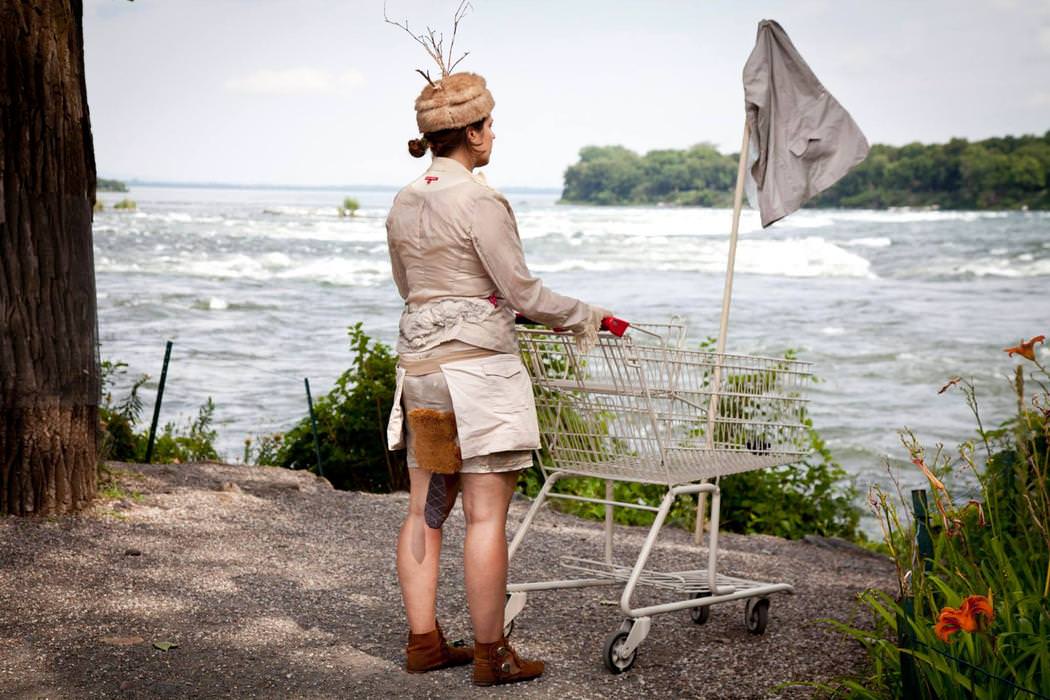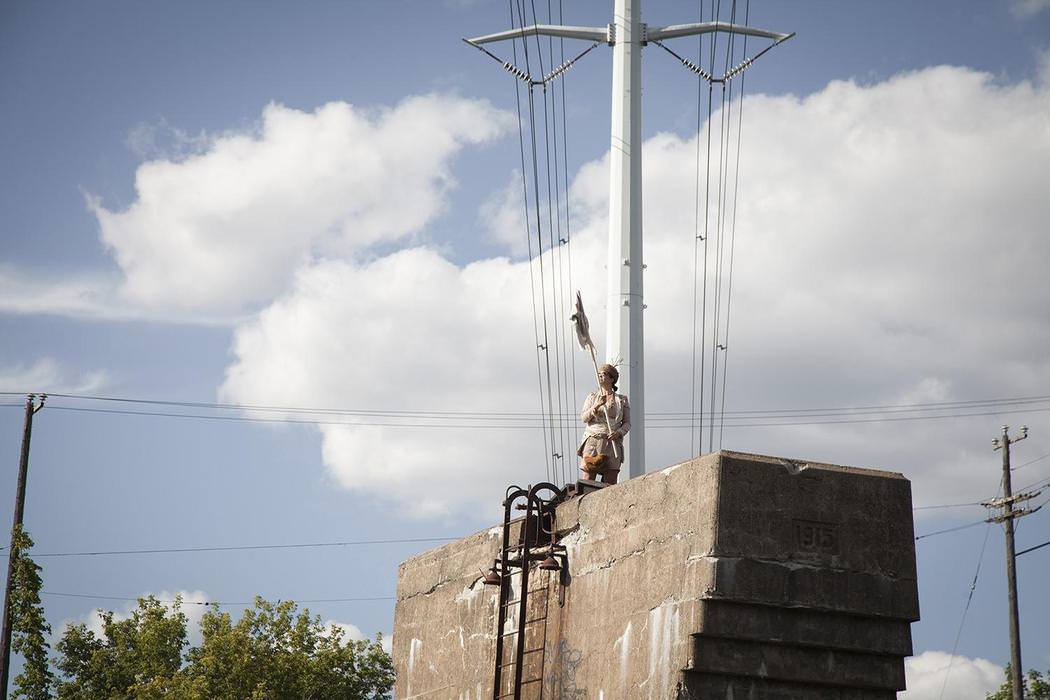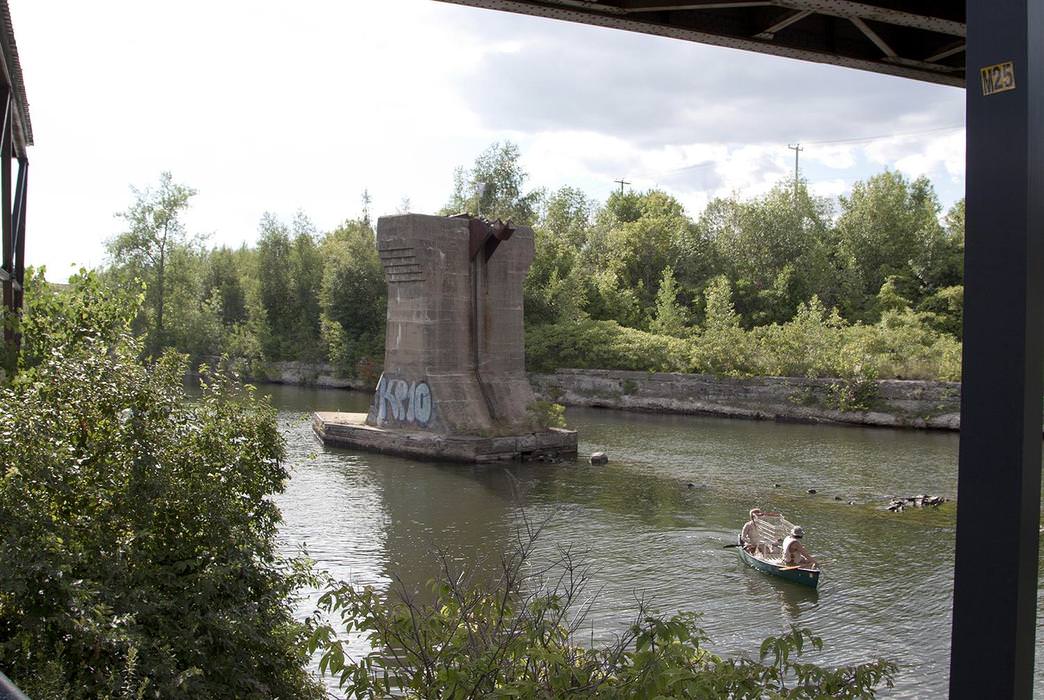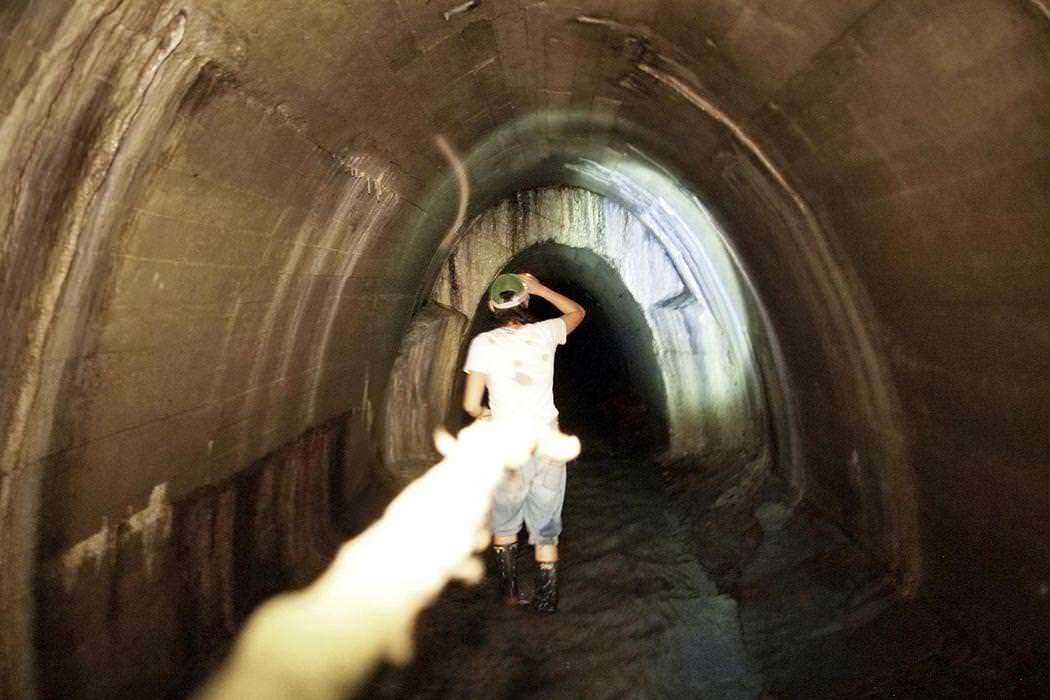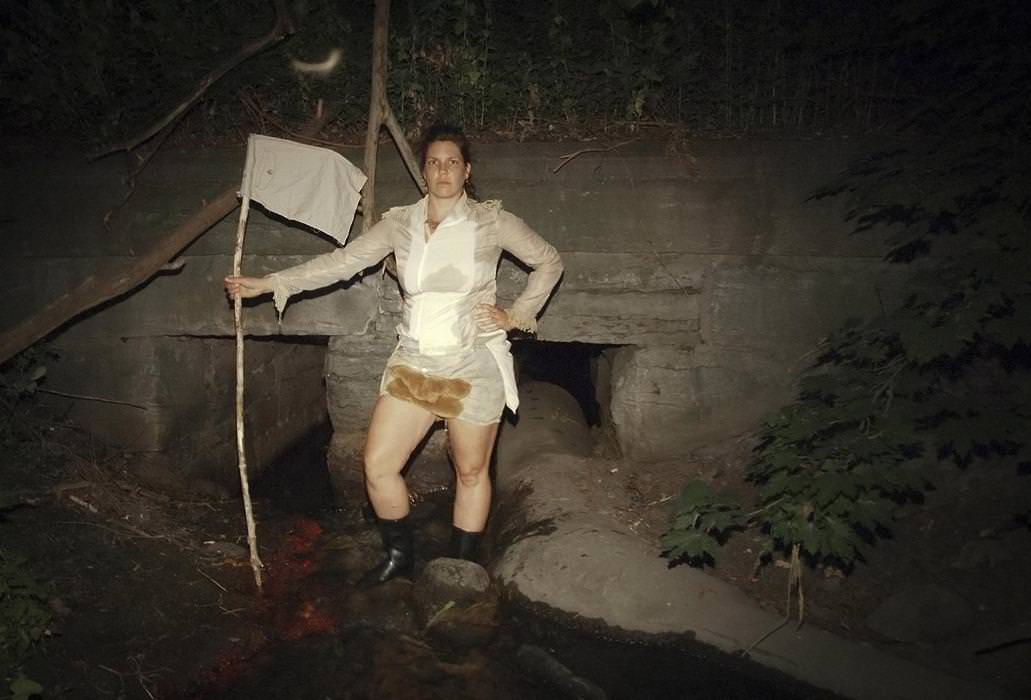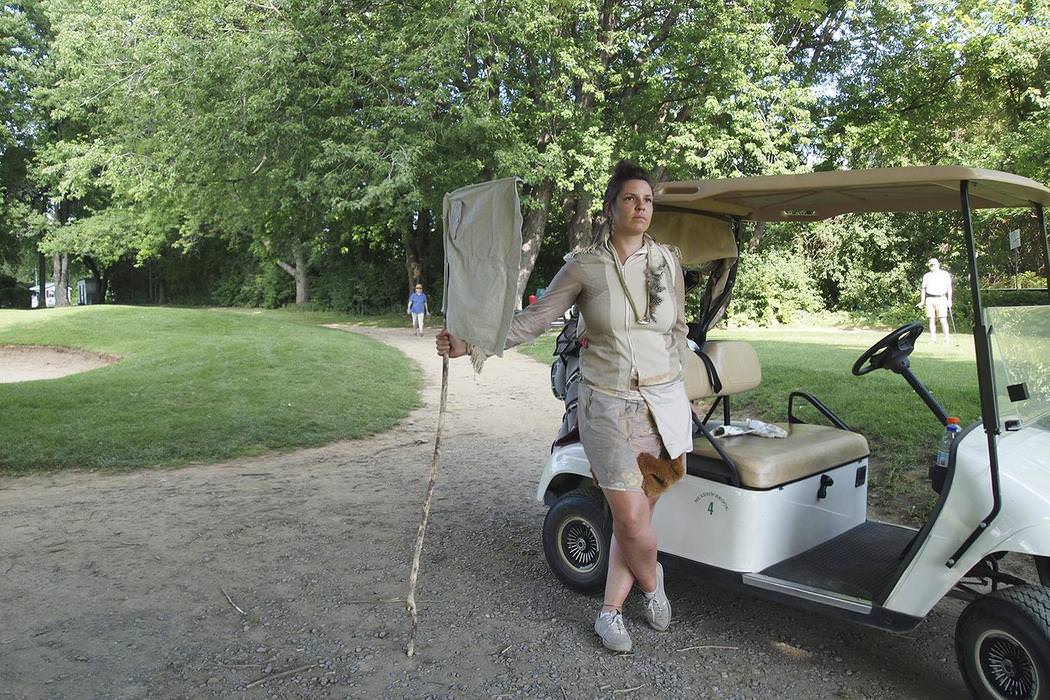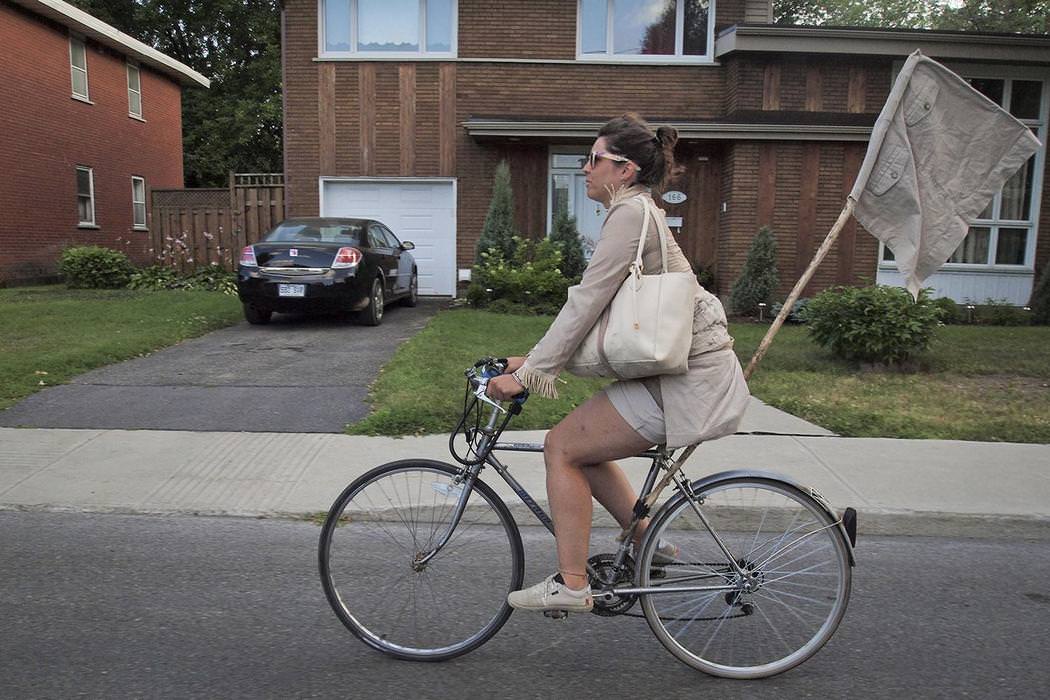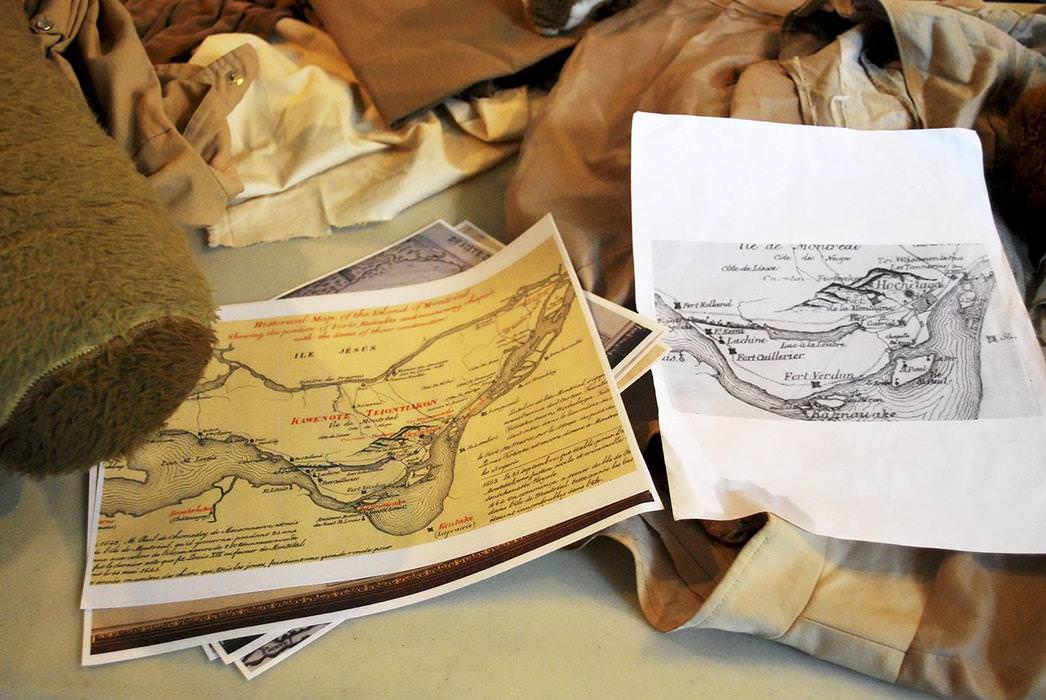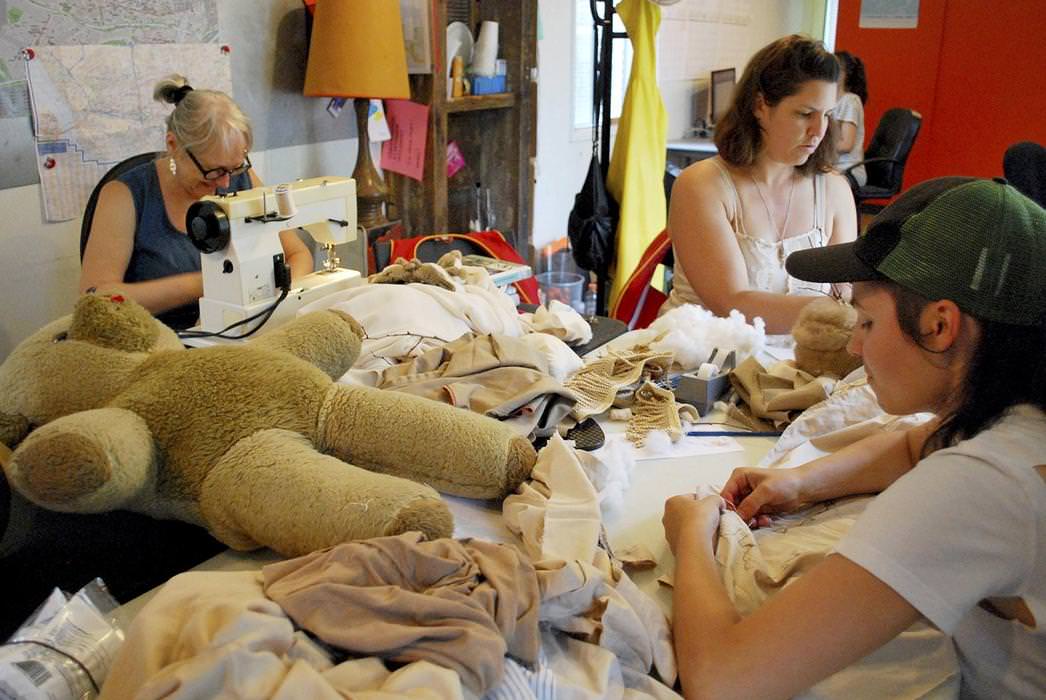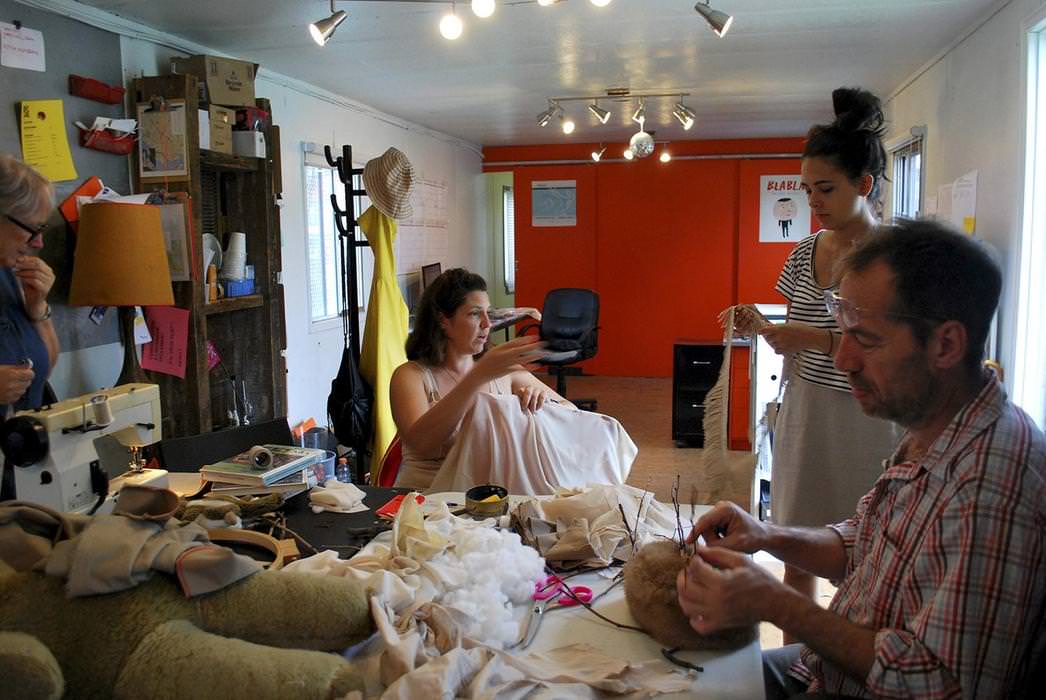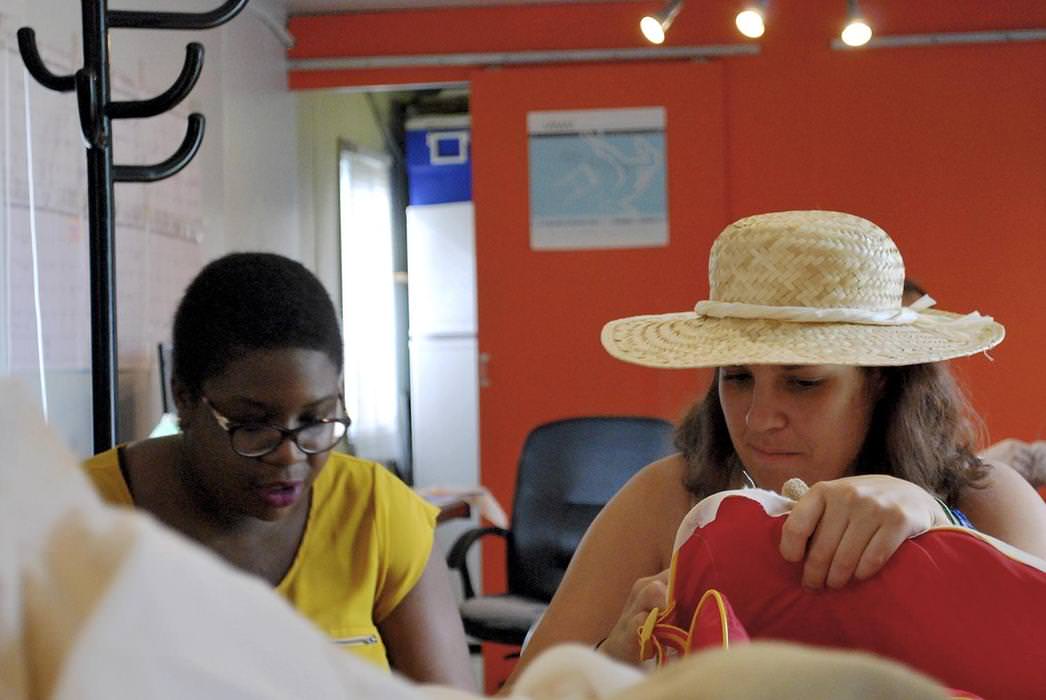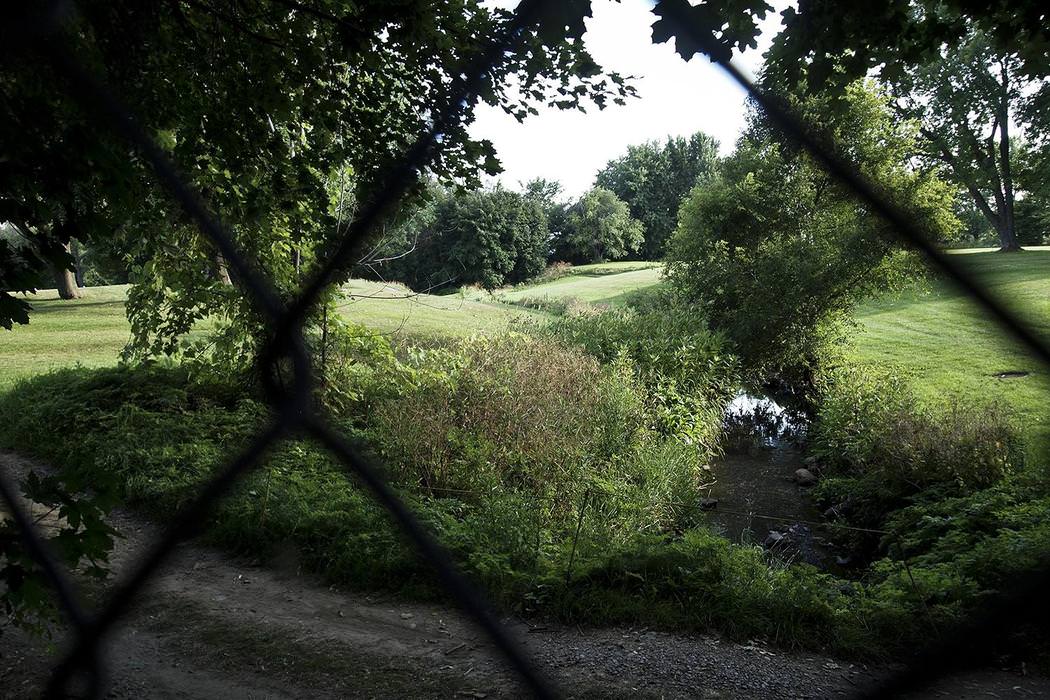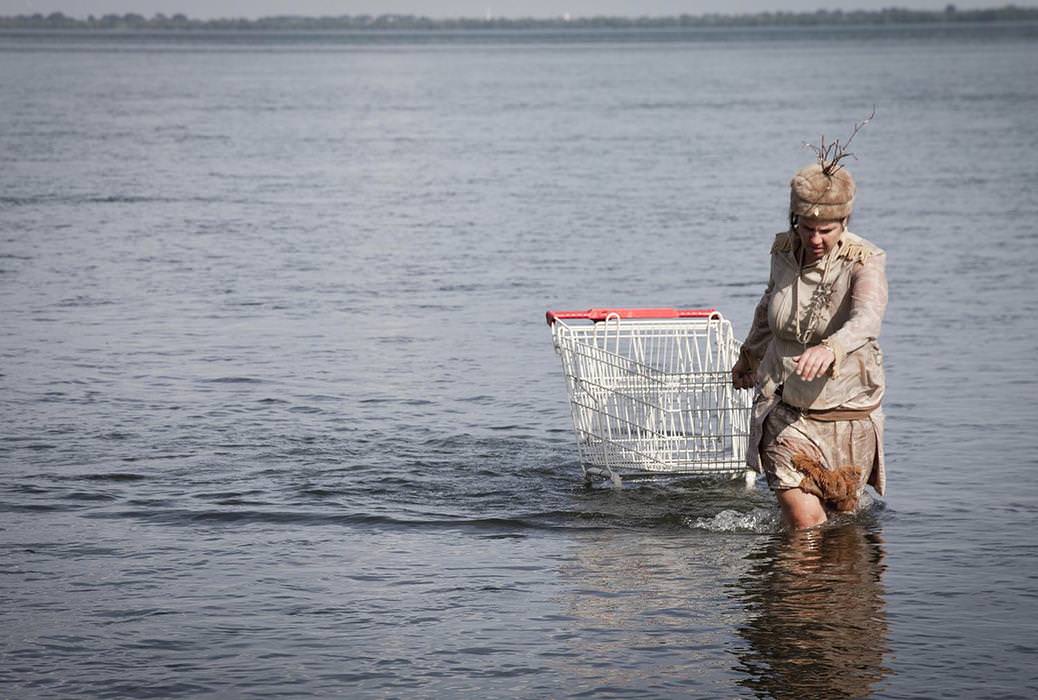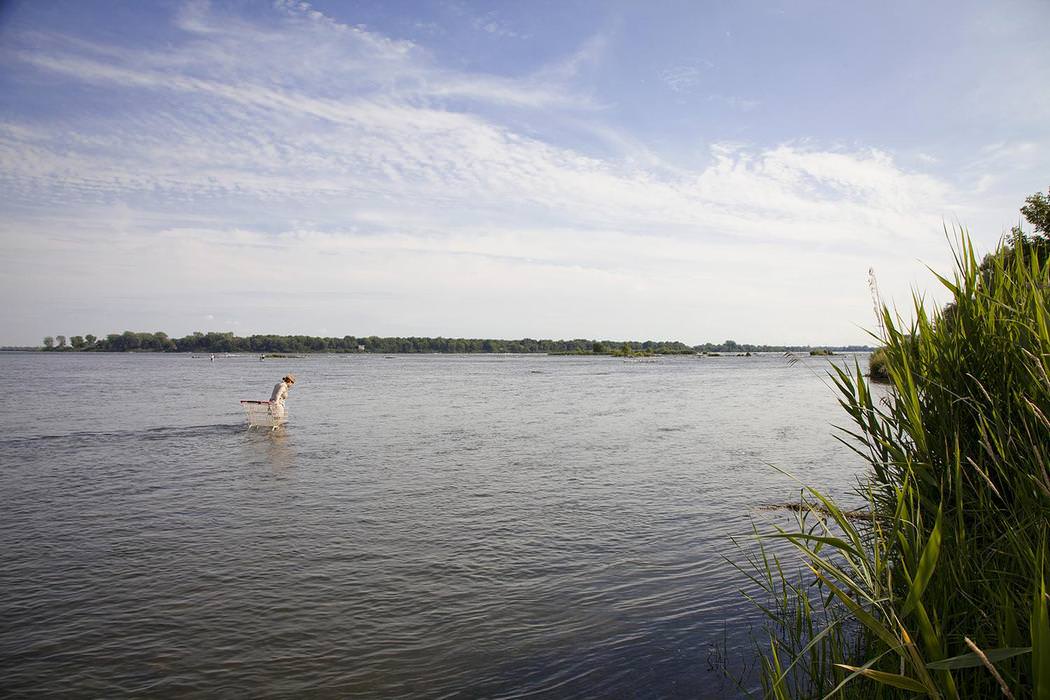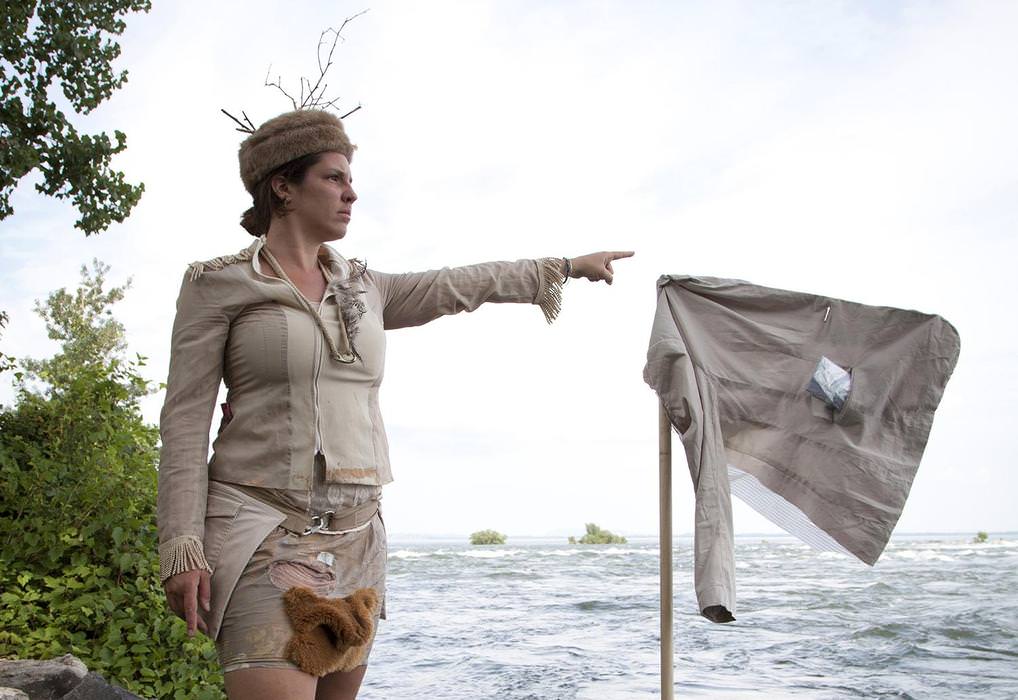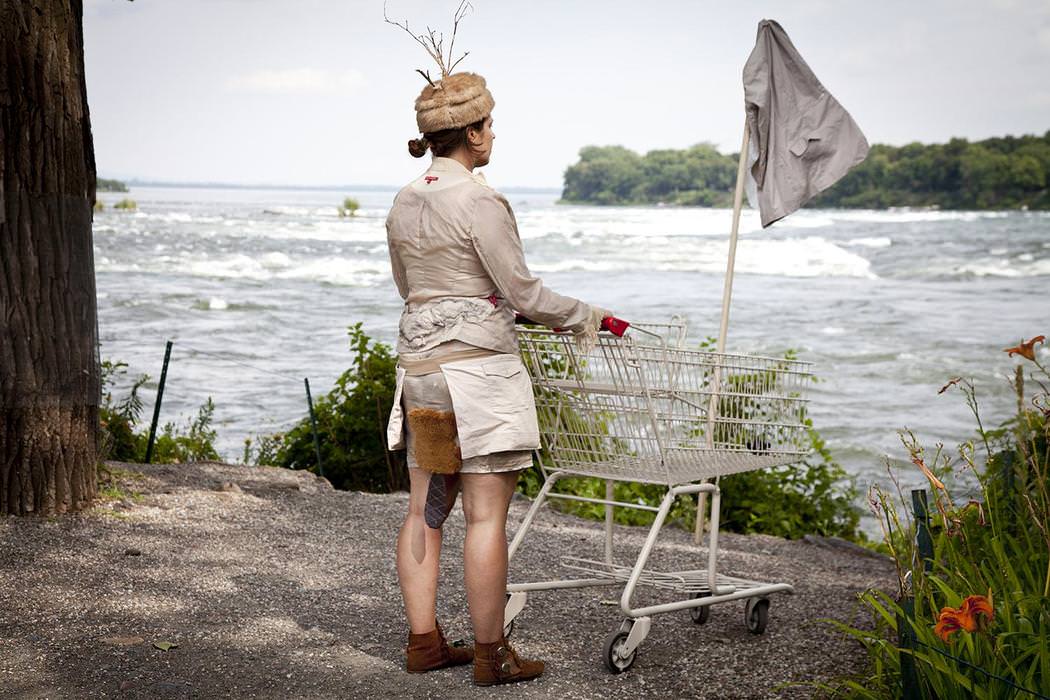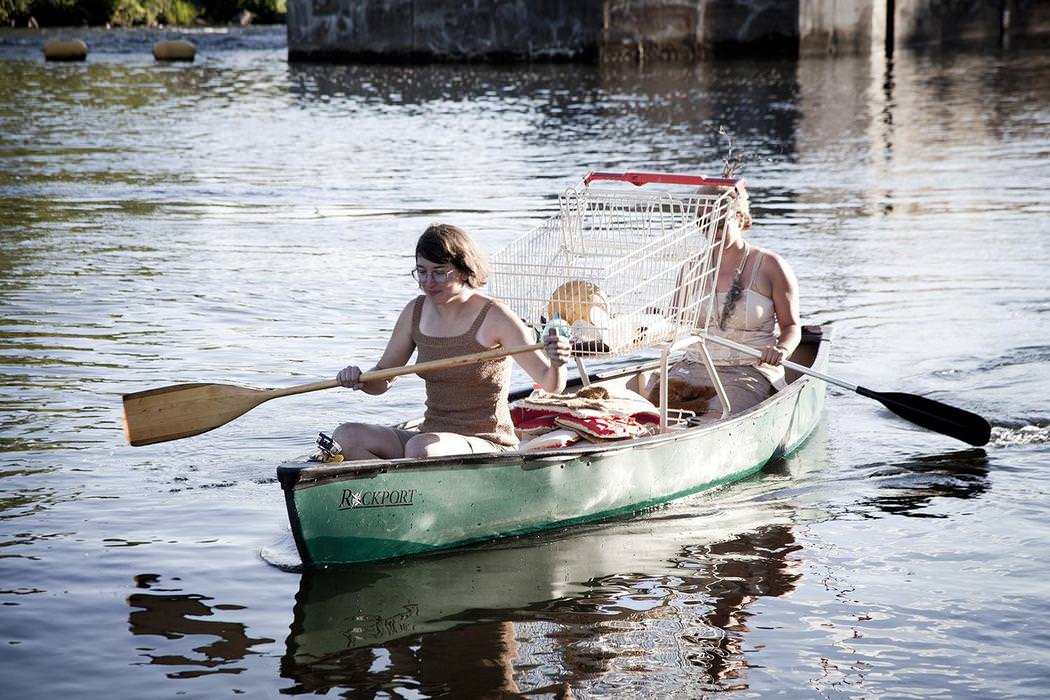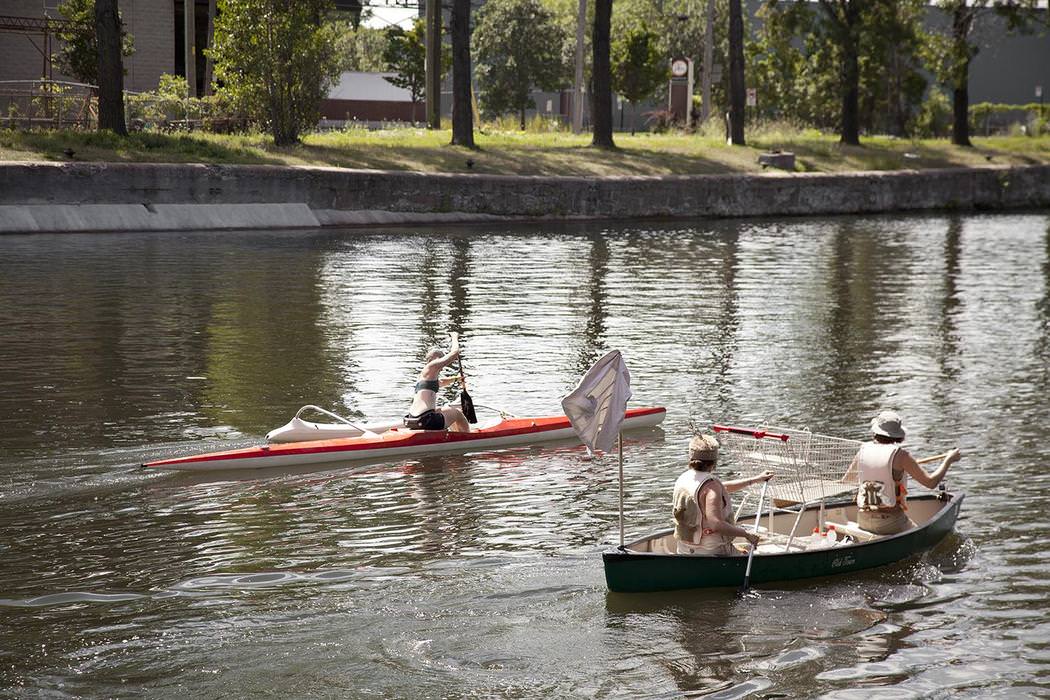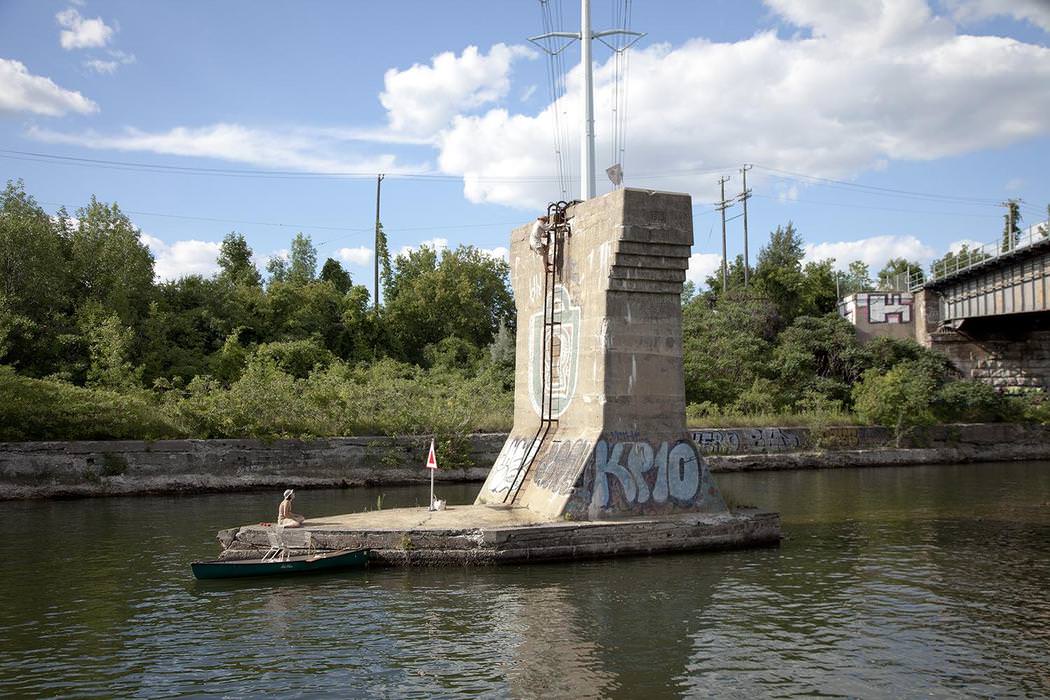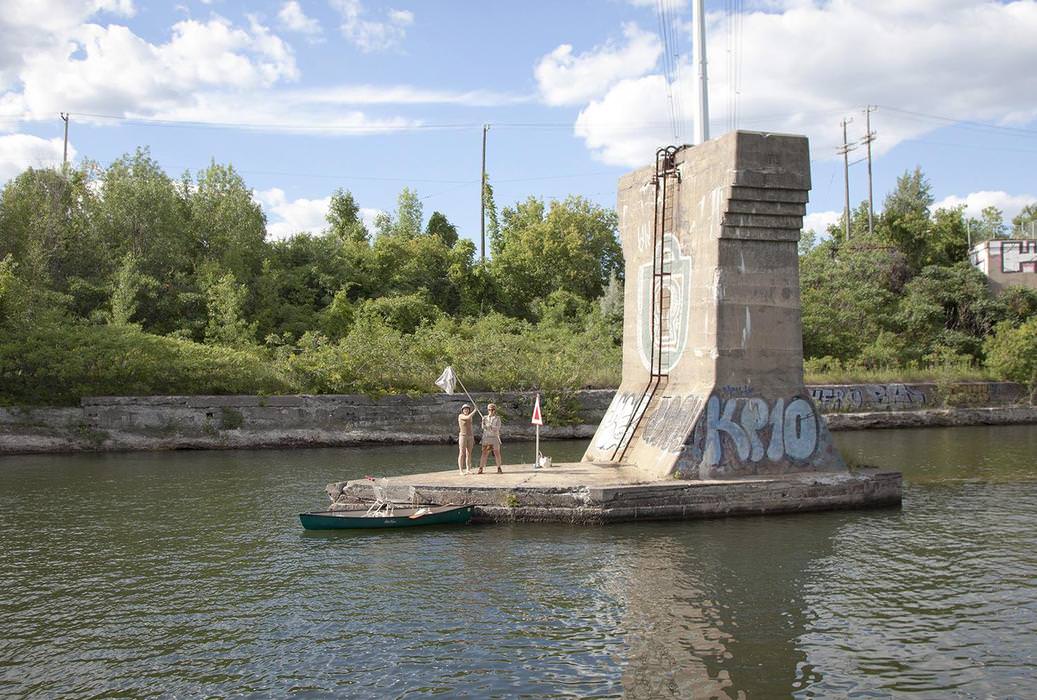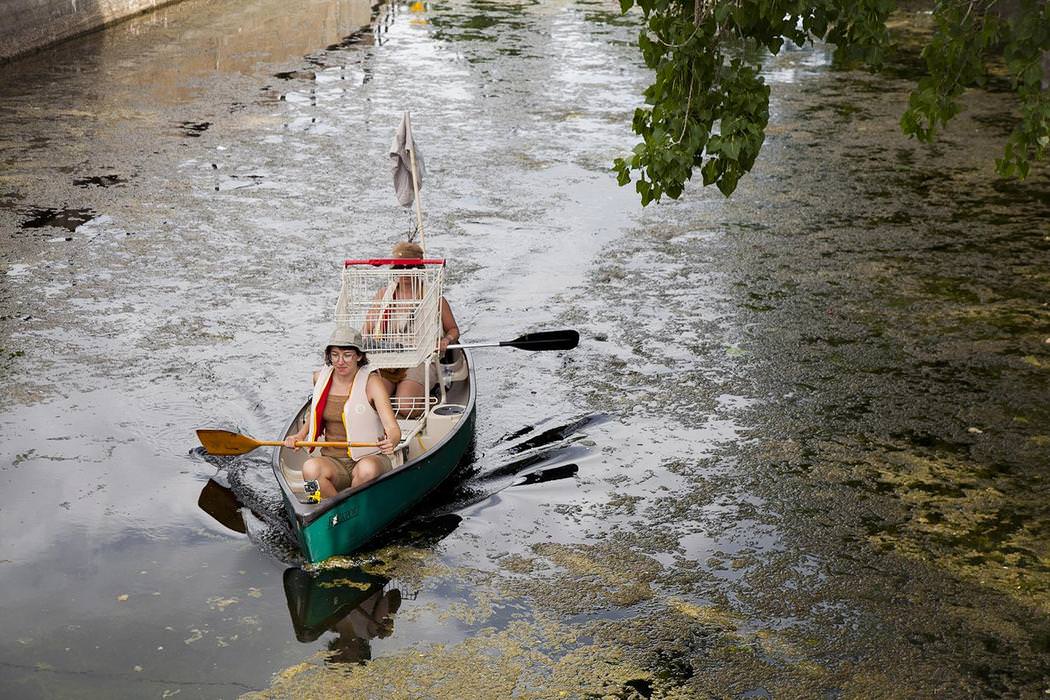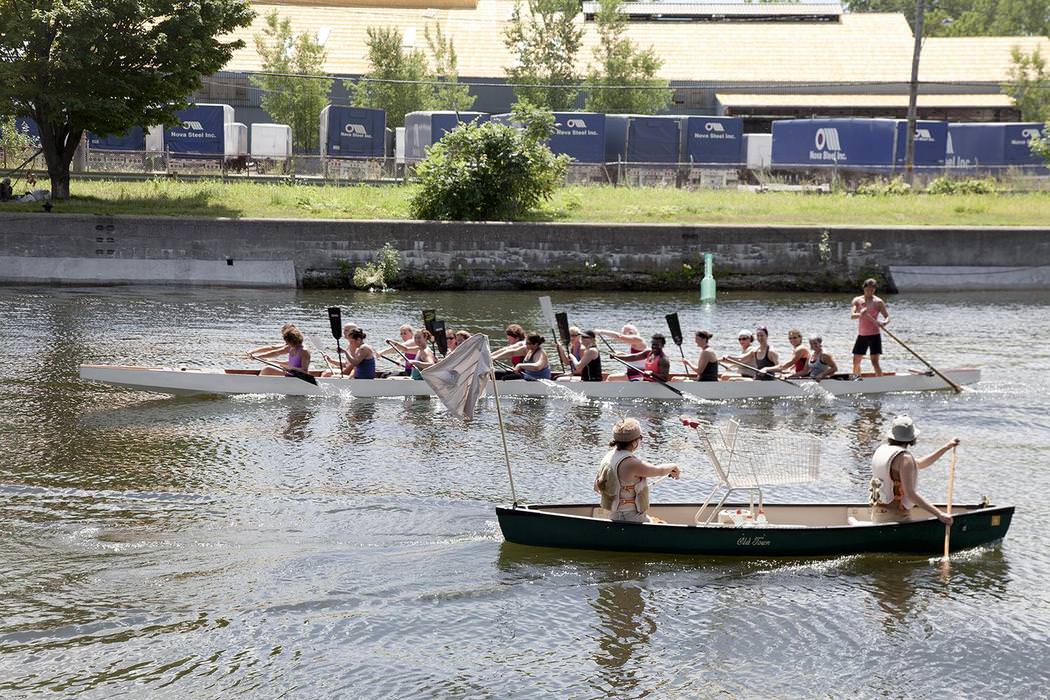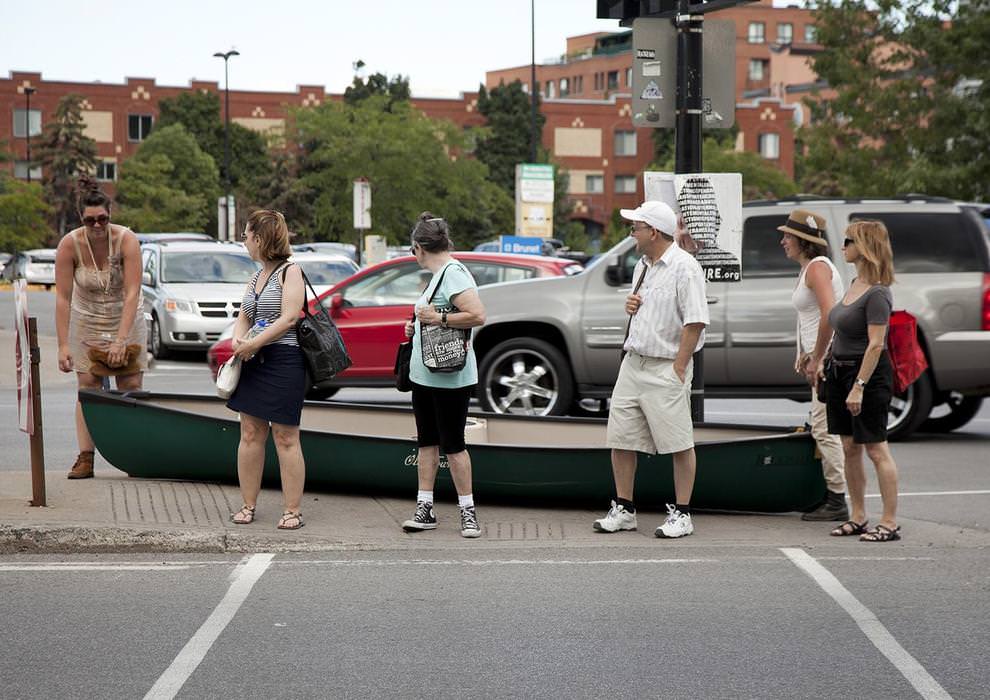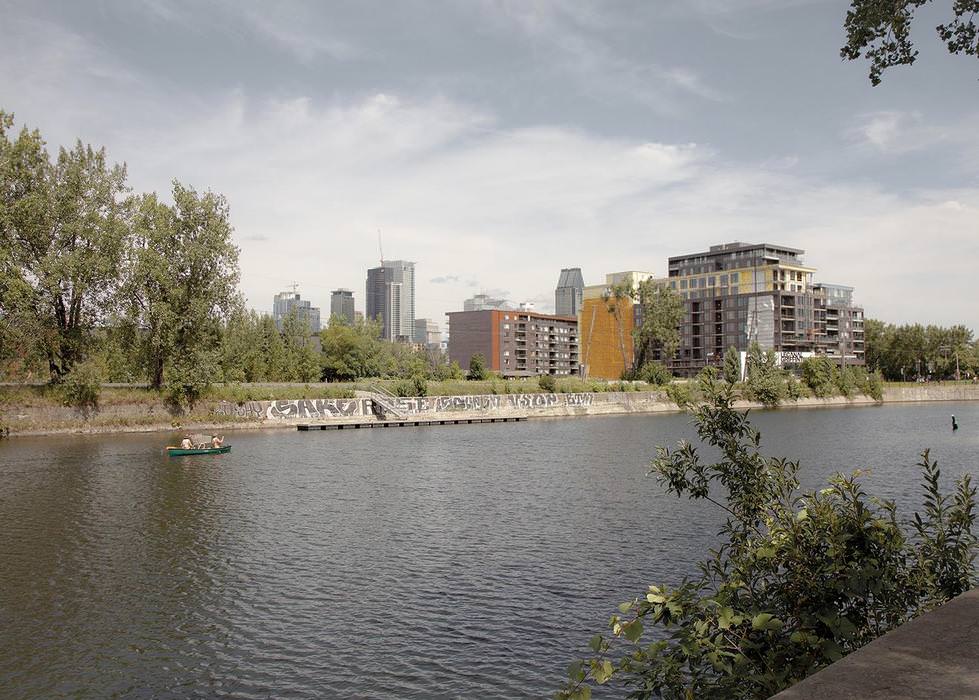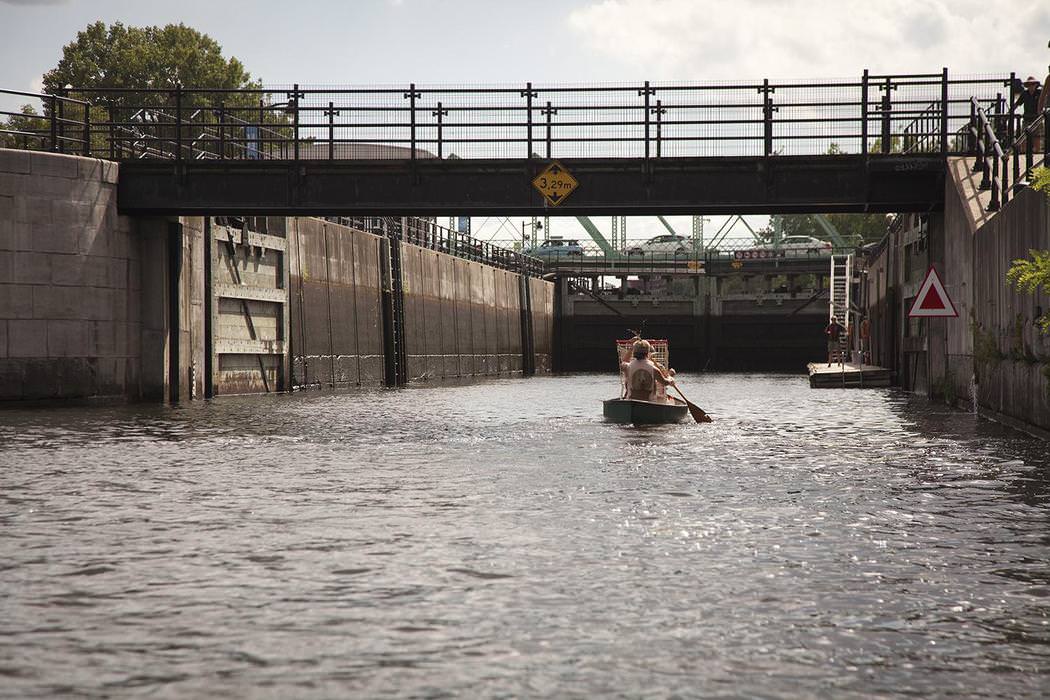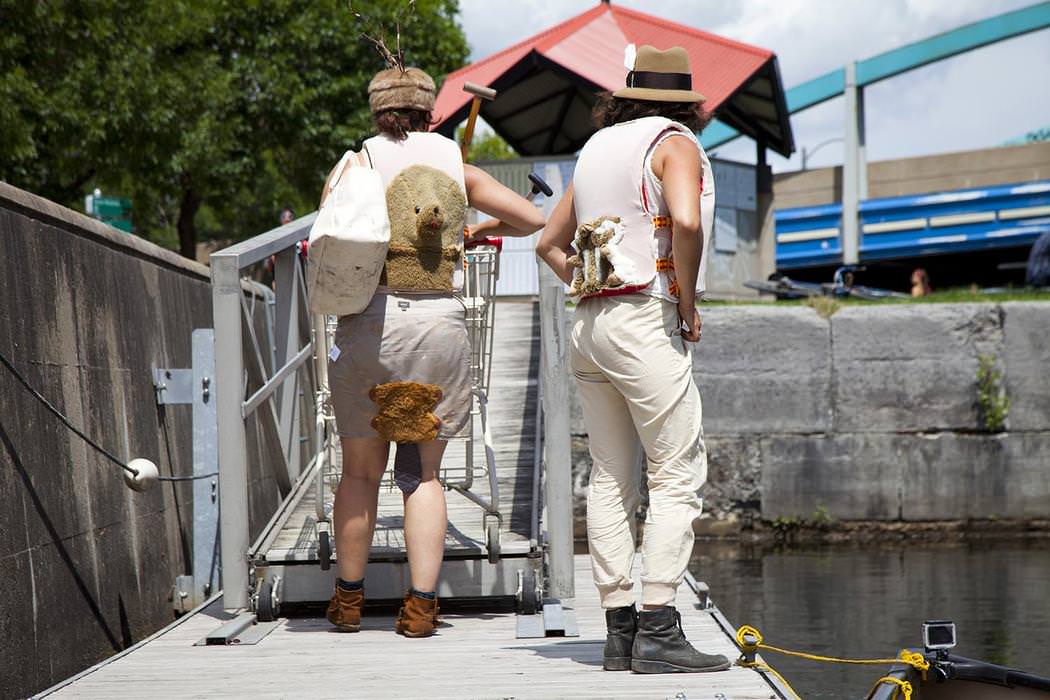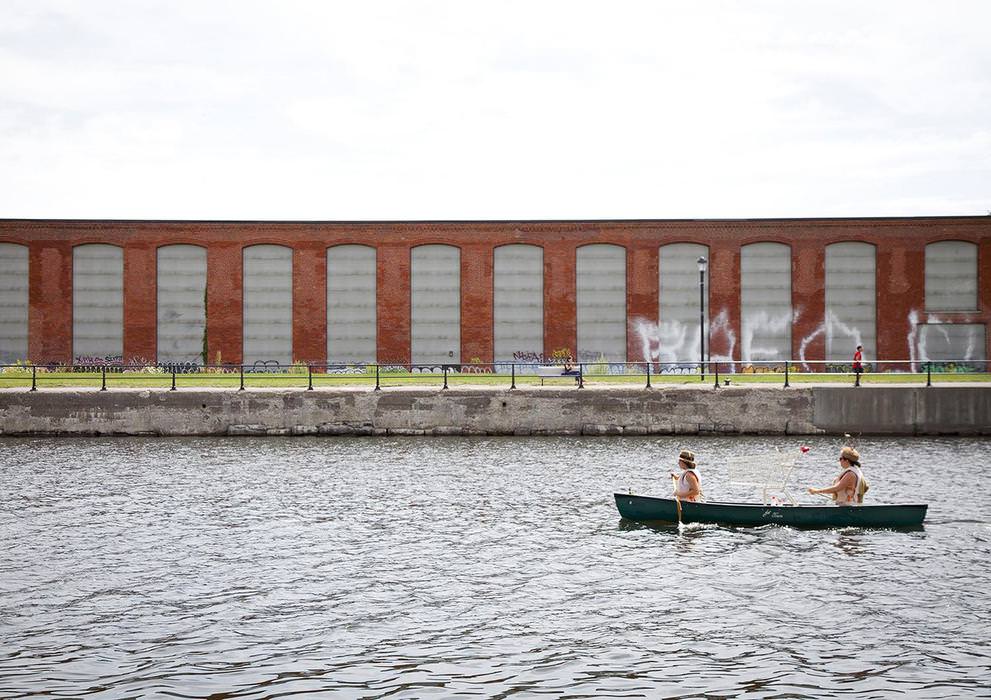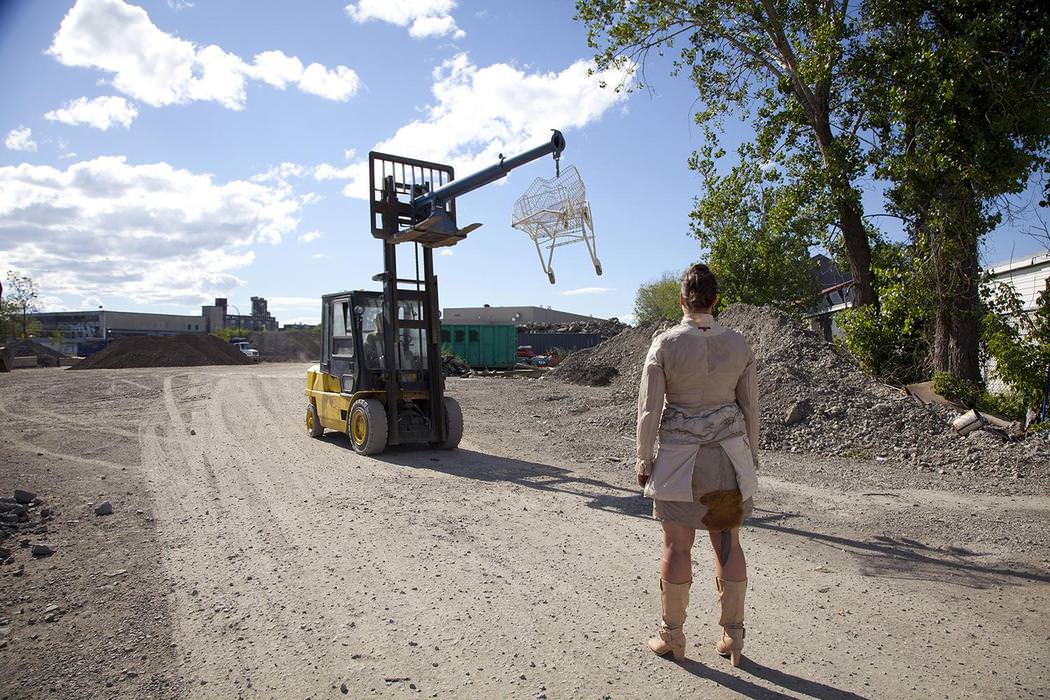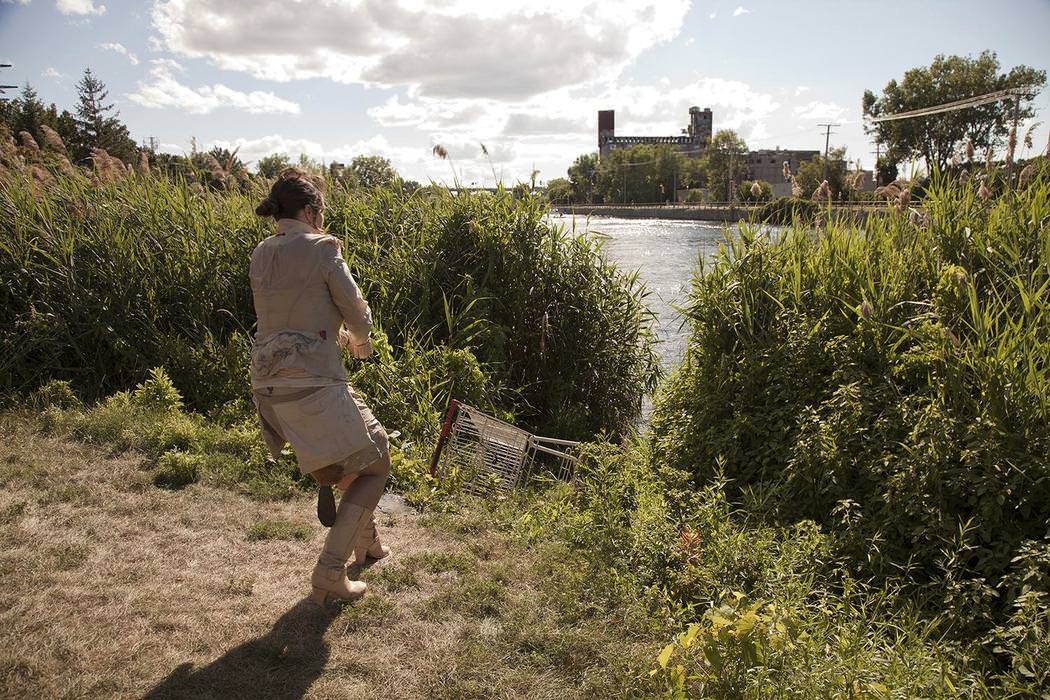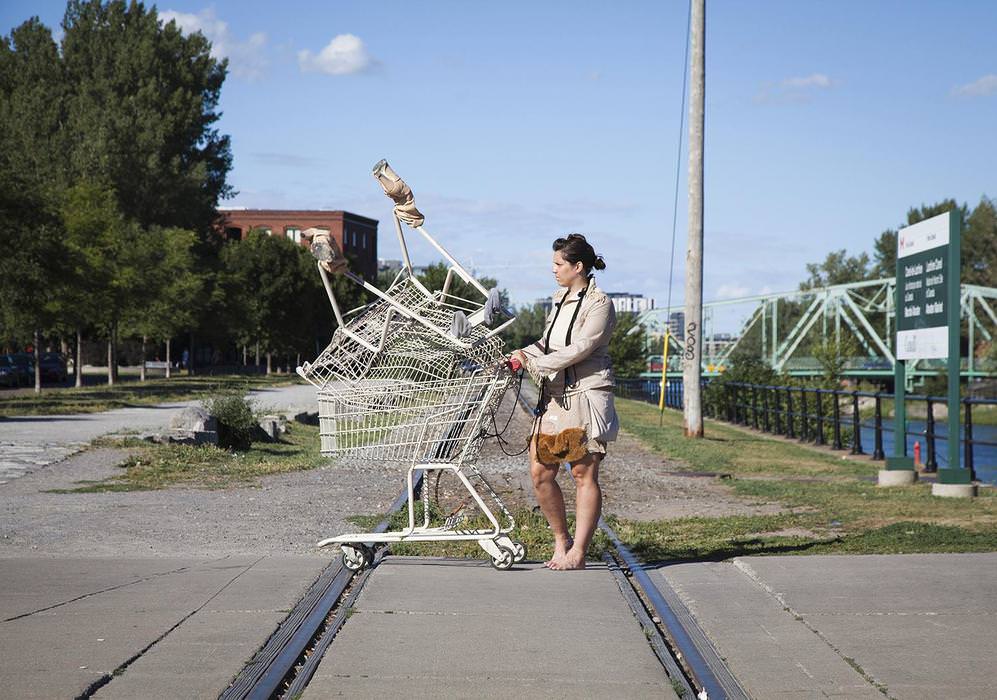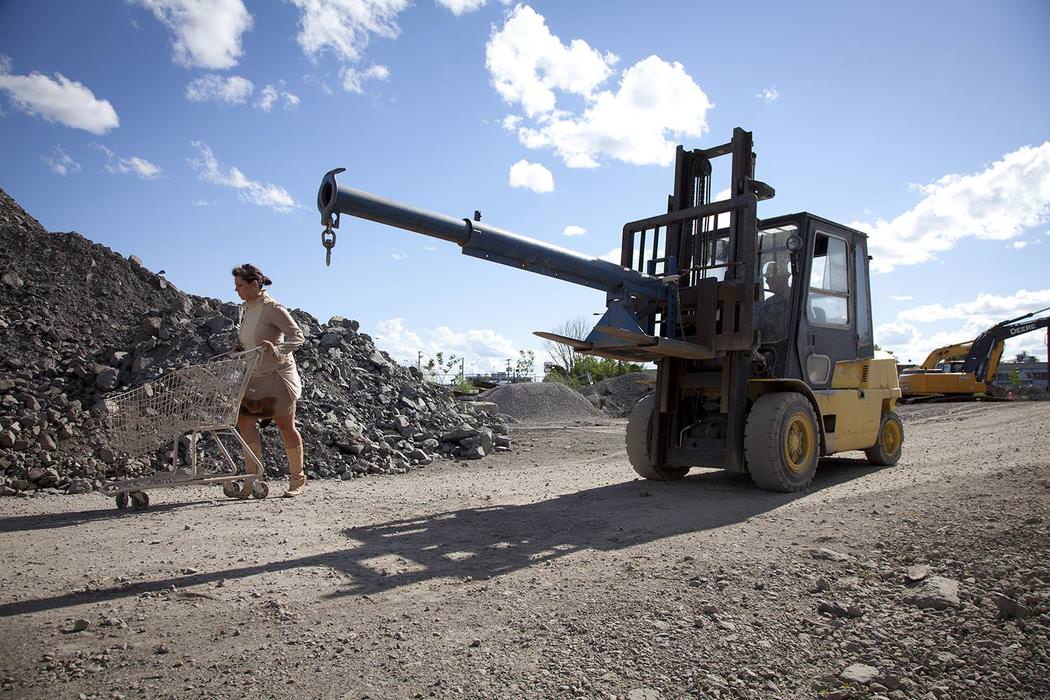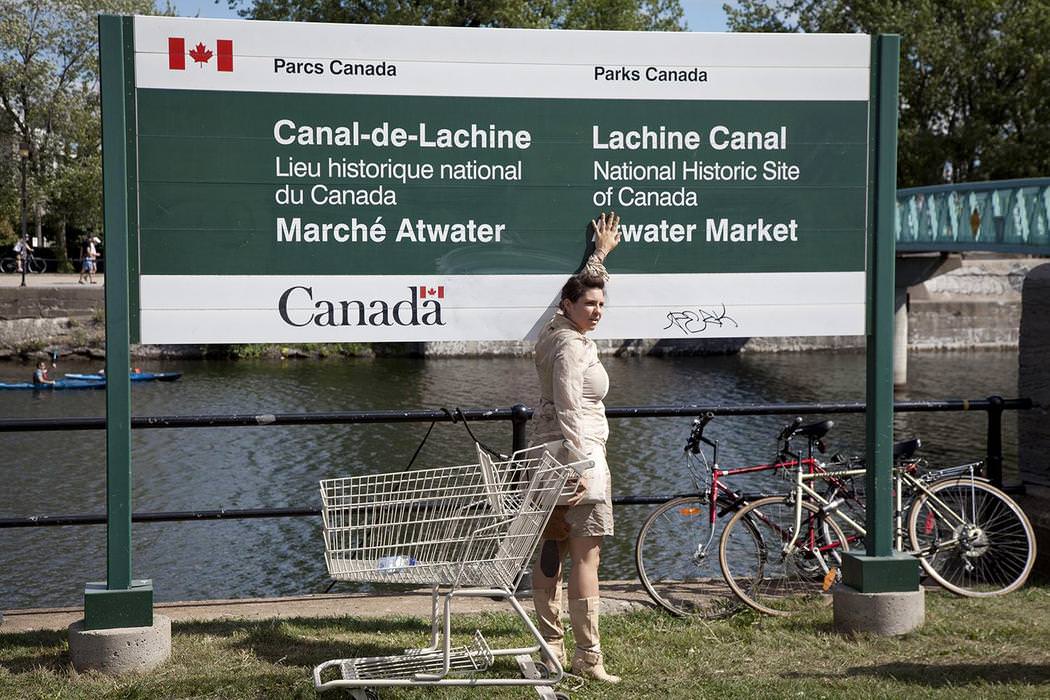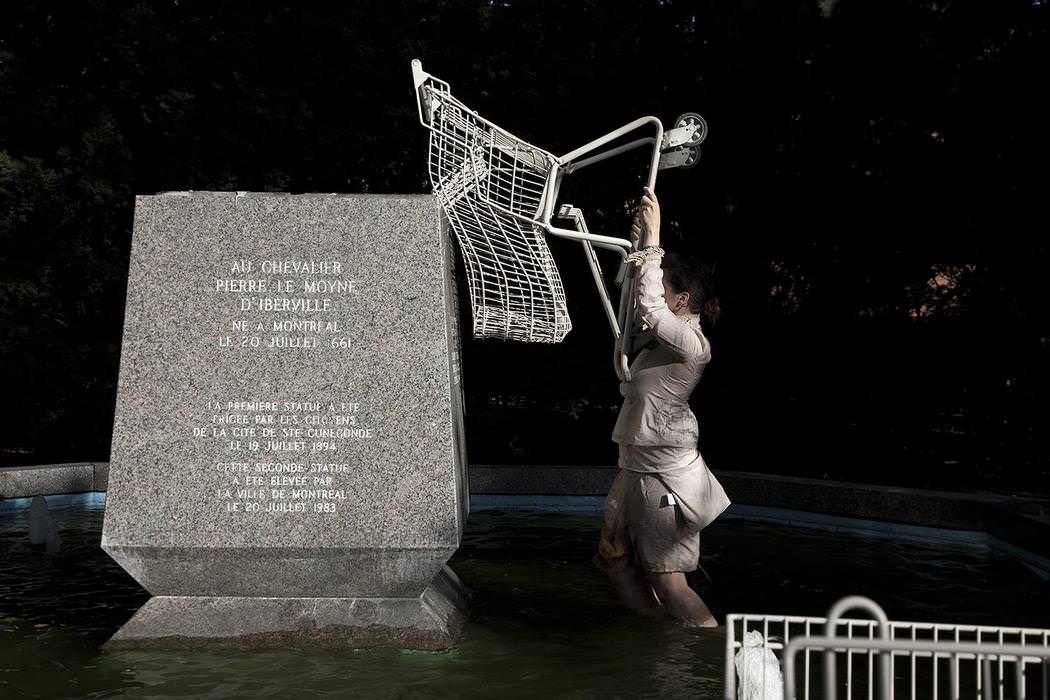Programming
JULIE LAURIN
MONUMENT PERFORMATIF [spontaneous support]
To commemorate the importance of rivers in our lives, to reflect on their transformation and those who have crossed them and sometimes given their lives, I intend to dedicate my wanderings with a grocery basket, to Water and Men.
View more
MONUMENT PERFORMATIF - The gathering
CONCLUSION OF THE CYCLE OF PERFORMANCES
Saturday August 6th, 2016,
Collective Wandering, departure from DARE-DARE @ 3 PM.
Finishing/artist talk 5 - 7 PM.
You are invited Saturday, August 6th to participate actively in my PERFORMATIVE MONUMENT before its final week of activation. Dressed in beige, we will lead the shopping cart to its definitive transformation, revealing on the way layers of identity linked to the territory and landscape of the Lachine Canal and St-Henri neighbourhood before erecting it on the pedestal of a missing statue.
The departure will take place at DARE-DARE's trailor at the angle of Atwater, Greene and Doré streets at 3 pm. From there, we will walk to different locations for about 2 hours before returning to the headquarters of the artist run center on the occasion of a 5 @ 7. It will be a unique moment to discuss the Monument and its continuity as a performative and sculptural object.
What lies beneath the concrete of the city? What relationship do we maintain with our territory? Looking at old maps of Montreal, I instinctively wanted to compare with a current map, locating familiar places; shorelines, waterways, islands, escarpments. I then worked to locate on the maps the different routes used by Europeans in the seventeenth century for developing the fur trade with first nations, who would guide newcomers along the natural routes of the territory they already knew for a long time. St. Pierre River used as a portage and canoe route for linking East to West Island of Montreal in order to by pass the Lachine Rapids, was transformed into a sewer. Not gone, this forgotten river still flows, surprisingly, having been covered ten years after the construction of Lachine Canal (1825), replacing the streams in its freight route function. Indeed, when comparing the route of the river to the Lachine Canal, we can establish the geographical similarity.
I feel attracted to canoe and walking journeys first experienced by first nations and the voyageurs involved in the fur trade, a way of traveling so respectful of nature. As a performance artist, I imagine the physical involvment that represents a crossing of several days at 15 hours per day. The comfort that dominates my lifestyle, the almost instant access to any resource from around the world seems to me more dangerous than jumping the rapids. To commemorate the importance of rivers in our life, to think about their transformation and those who have crossed and sometimes gave their lives, I intend to dedicate the first out of three weeks of walking with a shopping cart to water and Men. For each trip, I wish to be accompanied by one or more companion(s).
Julie Laurin confronts her environment and identity by juxtaposing unlikely realities and contexts. In a hybrid form between performance and sculpture, she causes transformations of interior and exterior spaces through gestures and non-compliance actions. The elements of her performance come from a sculptural work from everyday life materials, used as a malleable and symbolic setting. These objects, although diverted, are inseparable from their context and are the theater of human interactions where the main subject is present-absent. Laurin infiltrates spaces and objects in order to reconnect with the present, but not so far away from past and future projections.
